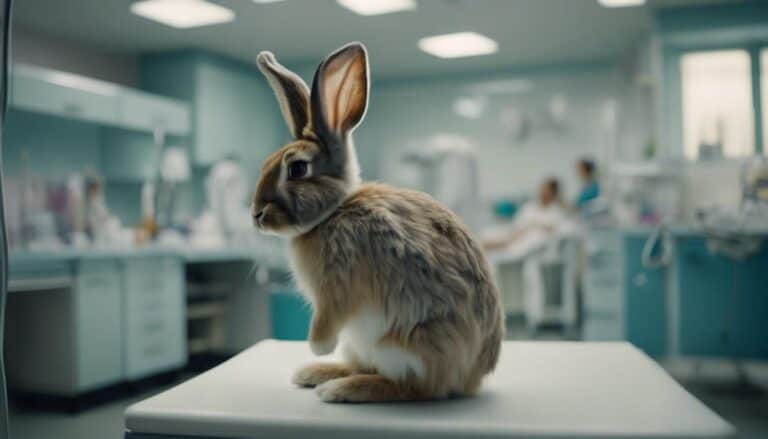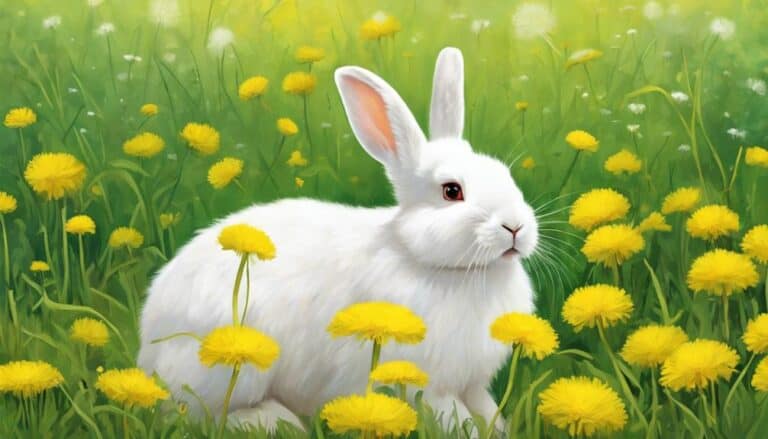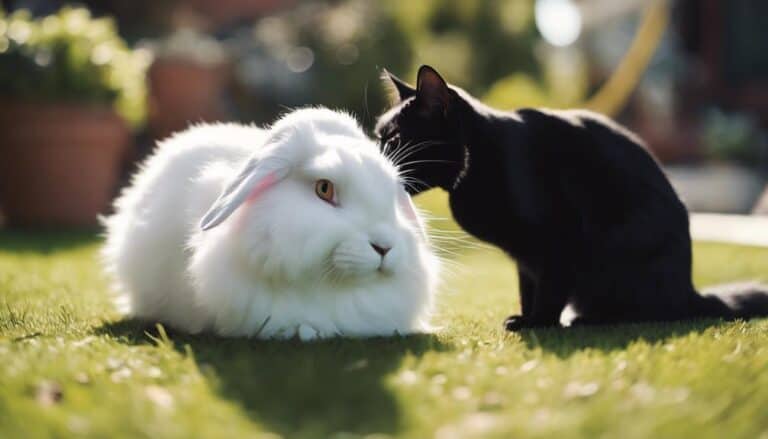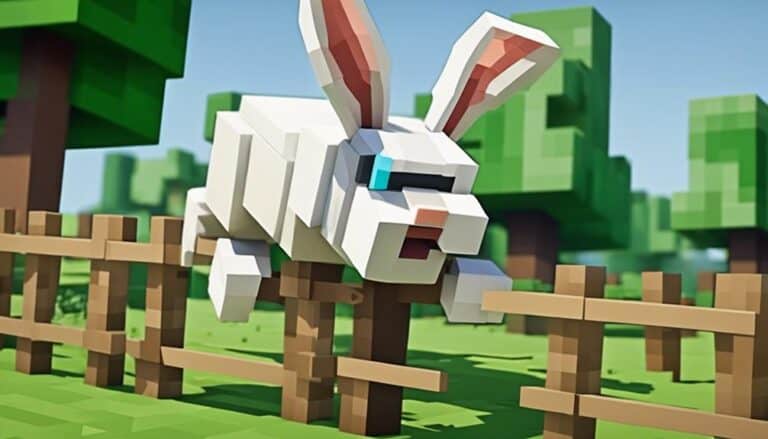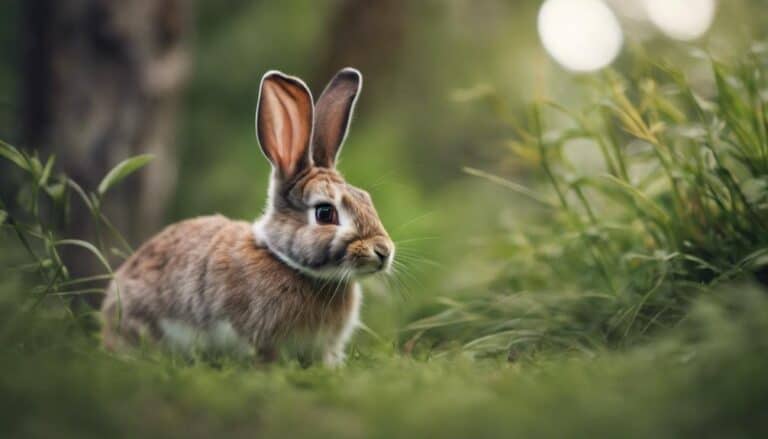Have you ever wondered if rabbits can change their gender?
While it may seem like a curious question, the answer may surprise you.
The intricacies of rabbit biology and the factors that influence their gender expression are not as straightforward as one might assume.
Understanding the complexities behind this topic can shed light on the fascinating world of rabbit reproductive anatomy and behavior.
Contents
Key Takeaways
- Gender identity in rabbits is stable from birth and does not naturally change.
- Genetic and hormonal factors determine gender expression in rabbits.
- Intersex conditions can lead to ambiguous genitalia, but gender remains consistent.
- Proper sexing techniques and veterinary care help prevent misconceptions about rabbit gender.
Rabbit Reproductive Anatomy
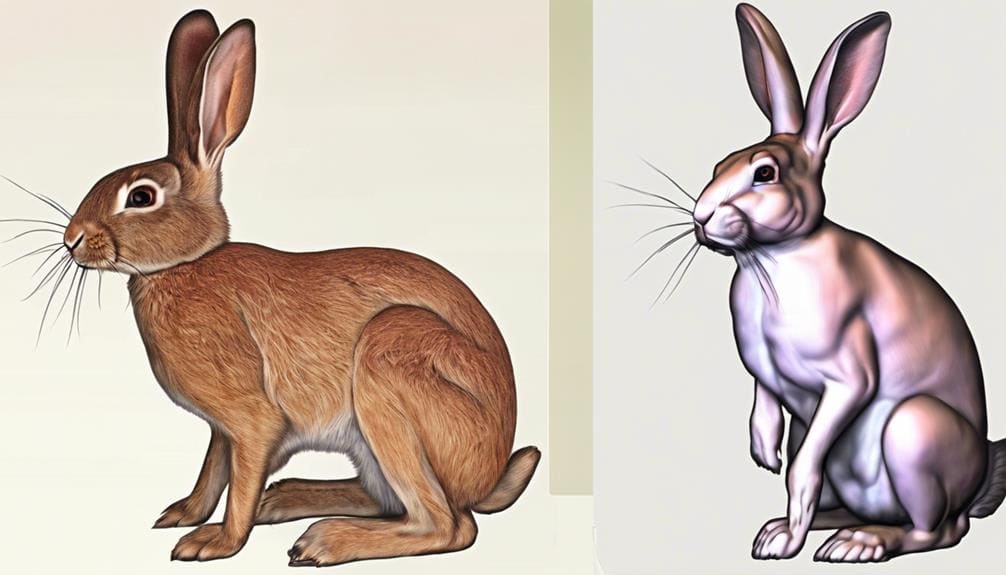
When examining rabbit reproductive anatomy, it's important to distinguish between male and female features for accurate gender identification. Male rabbits, also known as bucks, possess testicles located in the scrotum, which is absent in female rabbits, known as does. Additionally, male rabbits have a visible penis, a characteristic that can be confused with a female's genital opening if not examined carefully. Conversely, female rabbits have a slit-like genital opening located above the anus, while males have a small round opening below the anus.
Understanding these unique reproductive features is essential in determining the gender of rabbits correctly. Next time, when handling rabbits, pay close attention to these distinguishing characteristics to accurately identify whether they're male or female. By being attentive to the specific anatomical variances between male and female rabbits, you can confidently determine their gender and provide appropriate care accordingly.
Intersex Conditions in Rabbits
Intersex conditions in rabbits can result in the presence of ambiguous genitalia, posing challenges in accurately determining their gender. Hormonal influences and genetic factors play significant roles in the development of intersex conditions in rabbits, leading to variations in their reproductive anatomy. These rabbits may exhibit physical characteristics of both male and female genders, making diagnosis complex.
Veterinary care is important in diagnosing intersex rabbits, as specialized knowledge and diagnostic tools are often needed to identify these conditions accurately. Due to the gender ambiguity present in intersex rabbits, tailored and specialized treatment plans may be necessary to address their unique physiological needs. Providing appropriate care for intersex rabbits is necessary to guarantee their health and well-being, emphasizing the importance of seeking professional veterinary guidance for accurate diagnosis and management of these conditions.
Gender Identity in Rabbits
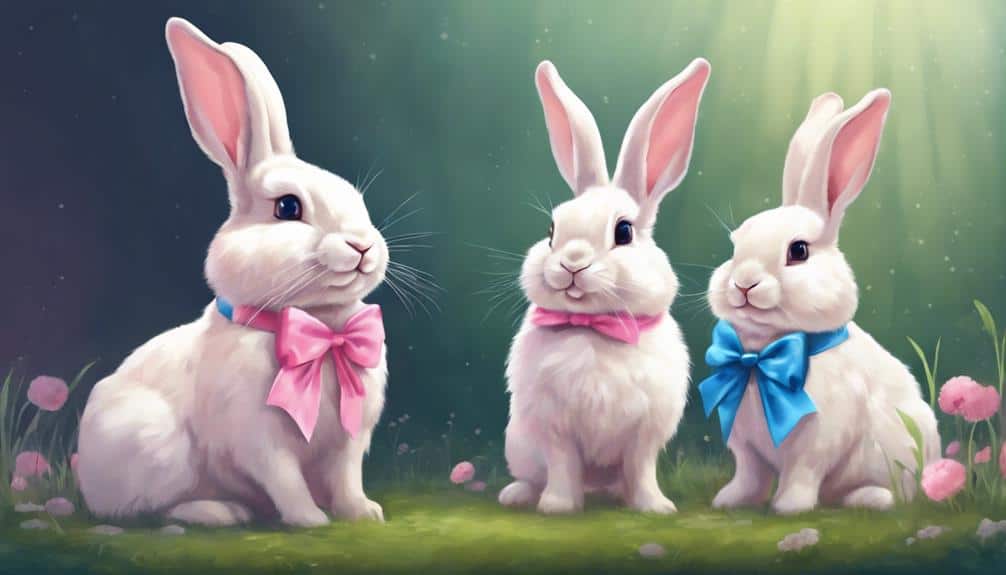
Gender identity in rabbits is a stable trait determined at birth, with bucks being male and does being female, maintaining their assigned gender throughout their lifespan. This identity is influenced by hormonal factors and genetic markers, ensuring a consistent gender expression. Behavioral cues and mating patterns also play a role in reinforcing these gender identities, with bucks exhibiting typical male behaviors and does displaying female reproductive behaviors. Environmental factors can impact mating patterns and breeding implications, affecting the overall population dynamics of rabbits.
| Gender Identity Factors | Description | Importance |
|---|---|---|
| Hormonal influences | Hormones play a key role in shaping gender identity in rabbits, influencing their reproductive behaviors and characteristics. | Critical for understanding gender expression. |
| Genetic markers | Genetic factors determine the sex of rabbits at birth and contribute to the stability of their gender identity throughout their lives. | Essential for accurate sexing and breeding practices. |
| Behavioral cues | Behaviors exhibited by bucks and does reinforce their gender identities, influencing their interactions and mating patterns. | Important for recognizing gender-specific traits. |
Factors Influencing Gender Expression
Genetic factors play an important role in determining the gender expression of rabbits from birth and remain consistent throughout their lifespan. Hormonal influences and genetic variations interact to establish the primary sex characteristics of rabbits, influencing their physical traits and reproductive capabilities.
Environmental factors and breeding practices also impact how genes are expressed, affecting the development of secondary sexual characteristics in rabbits. Hormone therapy can be utilized to manipulate reproductive behavior in rabbits, influencing their mating habits and fertility.
It's vital for breeders and owners to understand these factors to accurately sex rabbits and prevent misidentification. By considering the interplay of genetics, hormones, environment, and breeding practices, one can guarantee the proper care and management of rabbits while respecting their inherent gender stability.
Common Misconceptions About Rabbit Gender

Common misconceptions about rabbit gender often stem from the frequent misidentification, particularly in young rabbits. Breeder responsibility is paramount in accurately determining the gender of rabbits to avoid misidentification risks.
Behavioral cues, such as mounting or aggressive behavior, can lead to gender confusion if not interpreted correctly. Understanding that hormonal influences play a significant role in sex differentiation in rabbits is important.
While some may believe that rabbits can change gender, the truth is that rabbits don't naturally change gender; apparent gender changes are usually the result of misidentification by breeders.
Proper sexing techniques, backed by experience and knowledge of genetic stability, make sure that a rabbit born as a buck will always be a buck, and a rabbit born as a doe will always be a doe. An understanding of the genetic basis of sex in rabbits is important for accurate breeding practices and the prevention of misconceptions surrounding rabbit gender.
Frequently Asked Questions
Can a Rabbit Be Both Genders?
You ask if a rabbit can be both genders. Rabbits cannot be intersex; they are genetically male or female. Gender reassignment or hormonal changes are not possible. Understanding their genetic sex is essential for breeding practices.
Can You Get a Male and Female Rabbit?
You can have a male and female rabbit in the same household. To prevent unplanned litters, it's important to spay/neuter them. Responsible breeding pair selection and understanding rabbit breeding dynamics are essential to promote the well-being of your pets.
Can Male Rabbits Have Babies?
Male rabbits cannot have babies. They lack the necessary reproductive capabilities, such as carrying offspring. Understanding their gender identity, genetic variations, and hormonal influences on breeding behaviors is important for responsible breeding practices with female rabbits.
Can Rabbits Tell Your Gender?
Rabbits rely on your actions, tone of voice, and body language rather than determining your gender. They respond to your care and interaction, focusing on building trust and comfort. Your gender doesn't affect your bond with a rabbit.
Can Dental Issues Affect a Rabbit’s Gender?
When it comes to identifying dental problems in rabbits, it’s important to note that dental issues do not affect a rabbit’s gender. However, dental problems can impact a rabbit’s overall health and well-being, so regular dental check-ups are essential for every bunny, regardless of gender.
Conclusion
You have learned that rabbits don't naturally change gender, as they're genetically stable in their sex. Misidentification by breeders can lead to errors in determining a rabbit's gender.
In fact, studies have shown that up to 10% of rabbits may be mis-sexed at birth due to various factors.
It's important for breeders to be knowledgeable and skilled in sexing techniques to guarantee accurate identification and prevent misunderstandings about rabbit gender.

